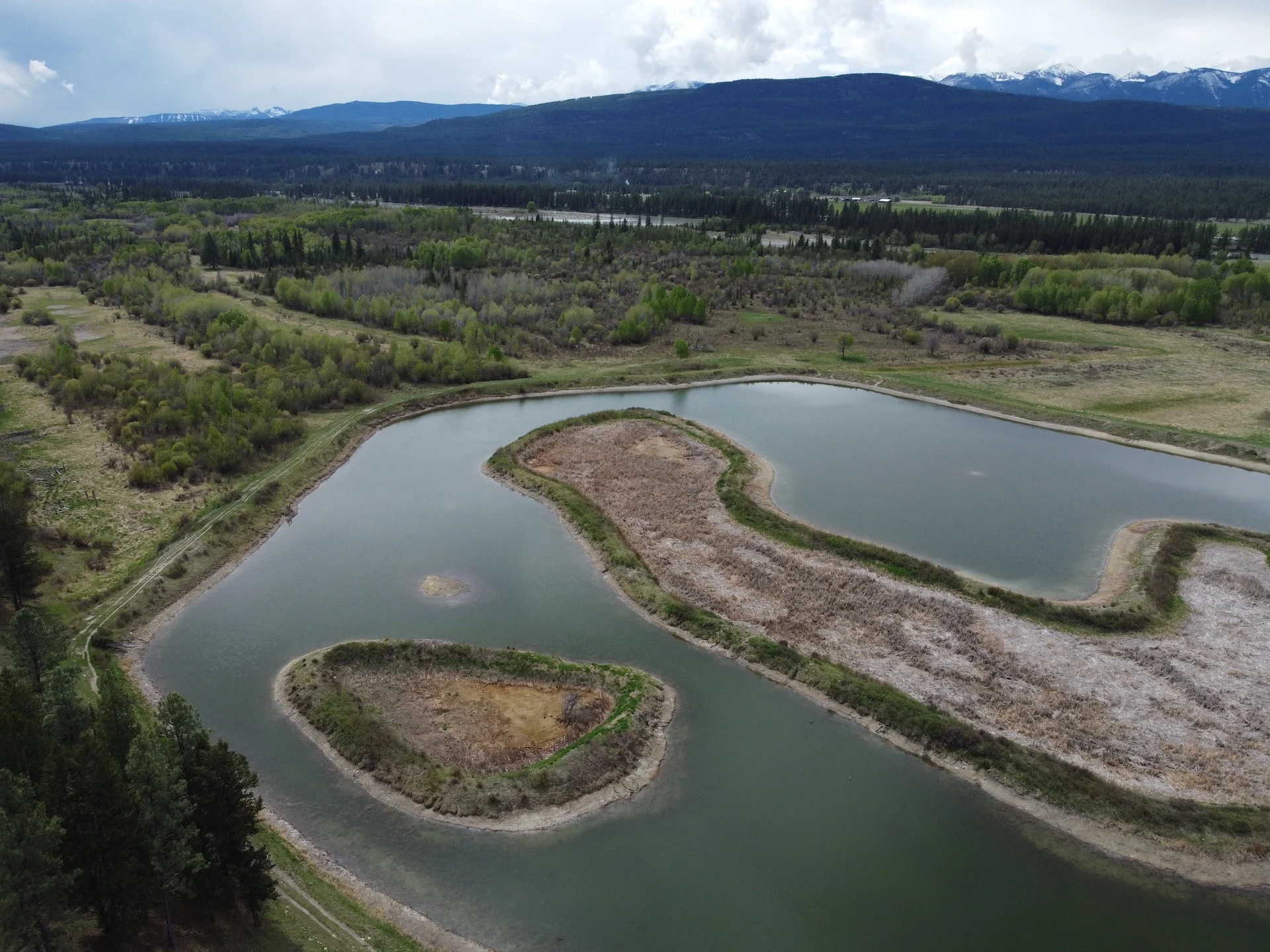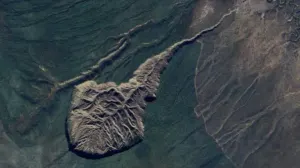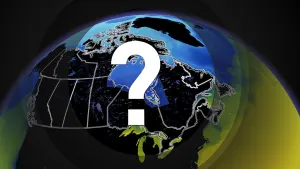
B.C. group races to save key habitat for grizzly bears and waterfowl
The Nature Trust of British Columbia is looking to secure an additional $415,000 to conserve 171 hectares of ecologically vital land in the East Kootenay region
Canada hosts many vital ecological havens that support wildlife and climate restoration, but some areas face significant threats if they are not properly protected.
British's Columbia's Lower Wolf Creek is one of those sanctuaries. The 171-hectare land plays a vital role in protecting endangered species and preserving habitats, serving as a vital corridor for wildlife such as grizzly bears, elk, and migratory birds like the trumpeter swan.
SEE ALSO: How and where to go on a safe quest to see wildlife in Canada
To help with preservation, The Nature Trust of British Columbia has launched a fundraising campaign to raise the final $415,000 to conserve the ecologically critical land in the East Kootenay region.
In fact, the Lower Wolf Creek Conservation Project is "a great example of some of the amazing ecosystems and wildlife landscapes" found in the Rocky Mountain trench of the East Kootenay region in British Columbia, says Jasper Lament, CEO of The Nature Trust of BC.

(The Nature Trust of British Columbia/Submitted to The Weather Network)
"It's a haven for species at risk. It's an incredibly important habitat for migratory birds that [travel through] the United States, Canada and beyond, and it's a key connectivity corridor for wildlife like grizzly bears moving back and forth across the valley," said Lament, in a recent interview with The Weather Network.
"It's also an important carbon sink to help buffer the impacts of climate change."
Lower Wolf Creek contains a 'good-sized' piece of habitat
Located within the traditional territory of the Ktunaxa Nation, Lower Wolf Creek could contain at least seven at-risk ecological communities, including grassland, open forest, wetland and riparian ecosystems, according to The Nature Trust of BC.
The area shelters designated critical habitat for the Lewis’s woodpecker, listed as threatened under the Species at Risk Act, as well as for the American badger, a species that is considered endangered.
As well, Lower Wolf Creek is situated within a key biodiversity area that provides habitat for several migratory waterfowl species, including the great blue heron, common goldeneye, trumpeter and tundra swan, cinnamon teal and bufflehead.

(The Nature Trust of British Columbia/Submitted to The Weather Network)
"It's a good-sized piece of habitat, and it's right next to some land that the provincial government acquired for conservation decades ago," said Lament.
Additional, federally listed at-risk species include black swift (endangered), barn swallow and bobolink (both threatened), common nighthawk, evening grosbeak, long-billed curlew, western toad, and the western painted turtle (all special concern). The land also houses the bighorn sheep, mule deer, elk, and American beaver.
"Trumpeter swans are the largest species of waterfowl on the planet. They're magnificent birds that seem to really appreciate the wetland habitat on this piece of land that we're buying for conservation," said Lament.
The Nature Trust of BC CEO said the organization is building a larger environment, which will provide "more value to wildlife and [enhance] a really important wildlife landscape."
WATCH: How wildlife corridors are crucial to connecting wild spaces across Canada
Creek acts as carbon sink to deal with climate crisis, too
The area’s carbon sinks, including grasslands, wetlands and forested ecosystems, help combat climate change by storing significant amounts of carbon in its soil and plant life. Despite making up less than one per cent of B.C.’s land base, grasslands support more than 30 per cent of B.C.’s species at risk, according to The Nature Trust of BC.
Approximately 90 per cent of the carbon stored in grasslands is housed within their soil and roots. Wetlands can store 81 to 216 metric tonnes of carbon per acre (0.40 hectares), depending on the location and the type.

(The Nature Trust of British Columbia/Submitted to The Weather Network)
"The twin crises of our time are our biodiversity loss and climate change. Buying land like Lower Wolf Creek, which has these carbon-rich ecosystems that hundreds of species rely upon, is just a great effective way to to take action to help address both biodiversity loss and climate change," said Lament. "[It] provides just a whole suite of benefits for conservation and for addressing climate change."
Visit our Complete Guide to Fall 2024 for an in depth look at the Fall Forecast, tips to plan for it and much more!
Lament noted the group has assessed the wildlife utilization from the available databases, but it hasn't started examining the specific amount of carbon stored in Lower Wolf Creek.
The project is included in a larger partnership The Nature Trust of BC has with Environment and Climate Change Canada (ECCC), protecting and restoring carbon-rich ecosystems across the province, he added.
"Lower Wolf Creek really has all of the key carbon-rich ecosystems that we're focused on through this program. It has wetlands, grasslands, and it has forests," said Lament. "Across that 422 acres (171 hectares), you have all those different habitats, all of which are very effective in storing carbon."
To make a donation to the Lower Wolf Creek project, click here.
'Landmark' win sees two other conservation areas protected in Kootenay
In what The Nature Trust of BC called a "landmark achievement for conservation," the group recently released details outlining the protection of two other key conservation areas in the Kootenay region: Bummers Flats - MapleCross Benchlands and Wycliffe Prairie, part of the Wycliffe Conservation Complex.

Bummers Flats - MapleCross Benchlands. (Michelle Daniel/Nature Trust of British Columbia/Submitted to The Weather Network)
Almost $4 million was raised through various sources to protect 354 hectares of habitat in the region. The two areas will provide critical movement corridors for wildlife, including grizzly bears and elk, according to The Nature Trust of BC. The purchase will contribute to supporting the region's biodiversity and environmental processes, including the facilitation of natural carbon removal from the atmosphere.
In a news release, the non-profit organization said the two new conservation areas house vital ecosystems, including grasslands, wetlands, riparian corridors, and Douglas fir forests. The ecosystems aid numerous endangered or other at-risk species and function as significant carbon sinks.
"We live in the most biodiverse province in Canada, yet almost a third of the species assessed in B.C. are now at risk. Together, we are making a difference by safeguarding vital biodiversity in the Kootenays and helping to mitigate climate change,” said Lament, in the news release.
Okanagan wildlife gets a boost with purchase of more conservation land
Thumbnail courtesy of The Nature Trust of British Columbia.
Follow Nathan Howes on X, formerly known as Twitter.










